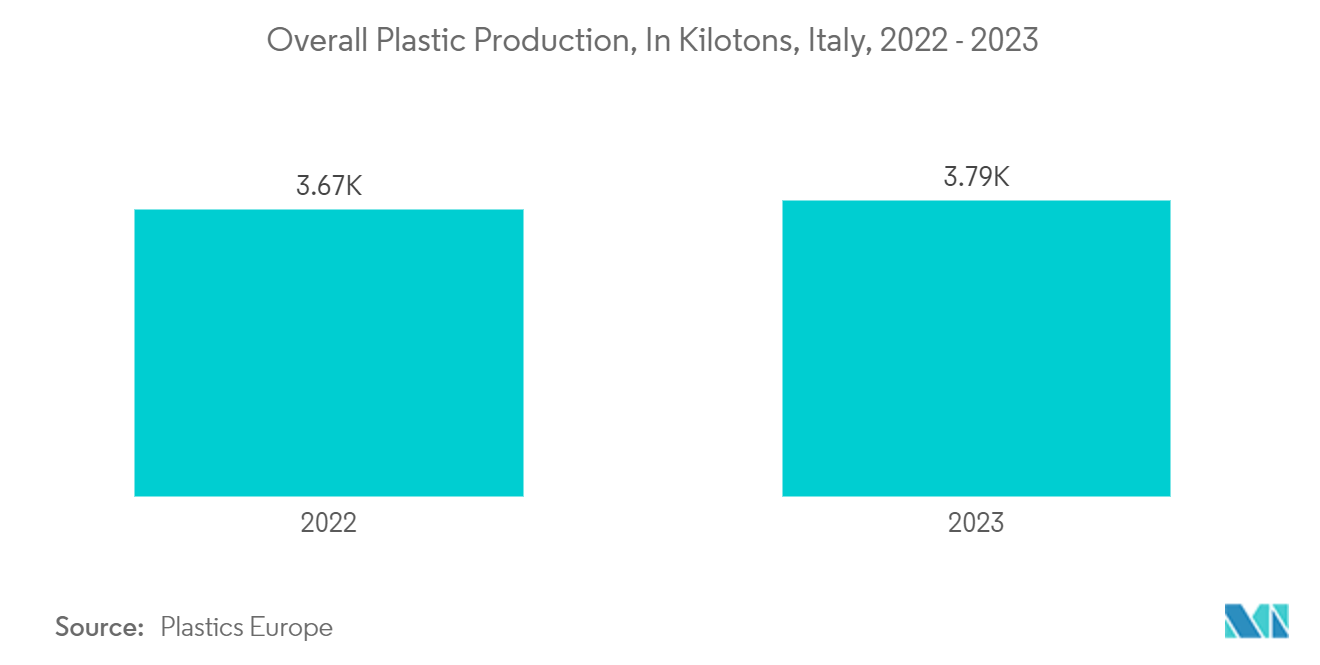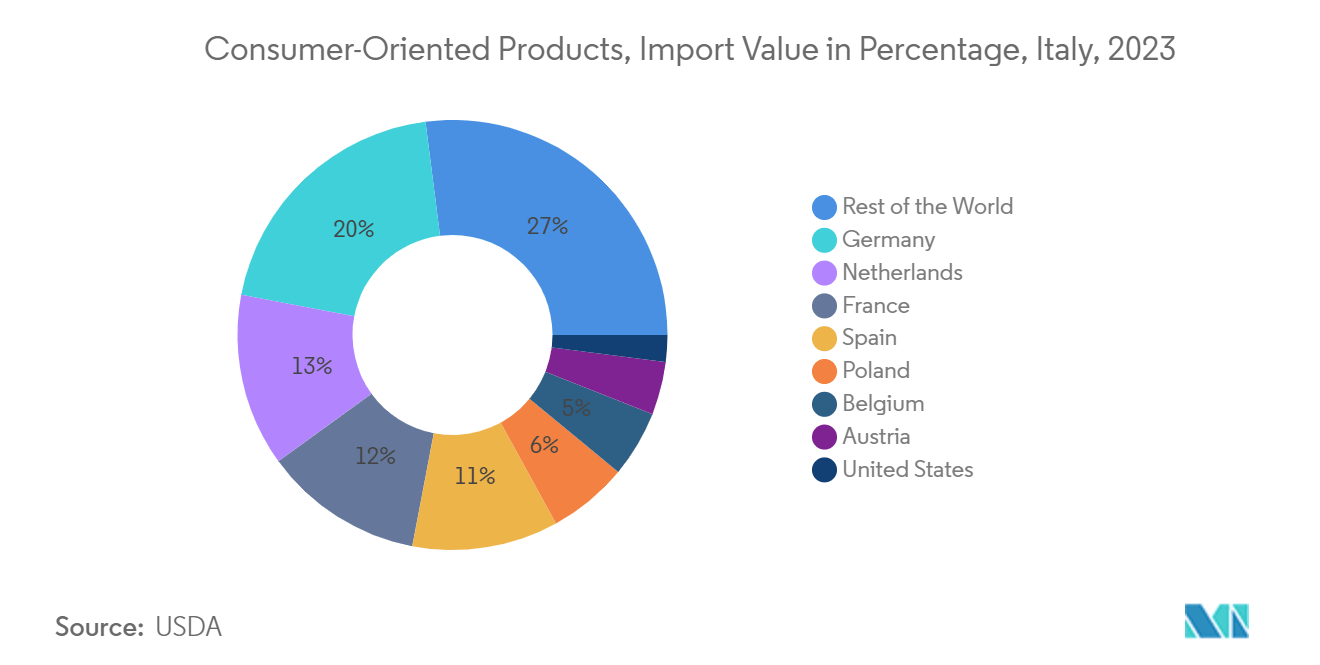Market Trends of Packaging Industry In Italy
Plastic Segment to Hold Significant Market Share
- Plastic, a versatile and durable polymer, is pivotal in packaging. It safeguards products, preserving their freshness and quality, across industries such as personal care, cosmetics, and pharmaceuticals in Italy.
- Italy's burgeoning food and beverage sector owes much to its thriving e-commerce landscape. Consumers, increasingly favoring shorter supply chains and consumption of natural and organic foods, are driving the demand for specialized plastic packaging. These packaging variants, including rigid and flexible types, not only protect but also enhance the transportation of food and beverages.
- Italy's expanding pharmaceutical sector, bolstered by substantial healthcare investments, is fueling the need for advanced packaging solutions. Notably, Farmindustria's data underscores Italy's rising investments in research & development, creating a strong ground for the packaging industry and, consequently, the market studied.
- Plastic production in Italy is on the rise, largely driven by the escalating demand for packaging across diverse sectors. Figures from Plastics Europe reveal production of 3,672 kilotons in 2022, which was projected to climb to 3,785 kilotons by 2023, underlining the market's growth trajectory.

Food Segment Expected to Dominate the Market
- Italy is the second-largest manufacturer in Europe, excelling in machinery, clothing, automotive components, and medicines. The country is renowned for exporting food products such as wine, pasta, cheese, and olive oil. The Italian market shows promise for organic, functional, and low-fat foods, which significantly propels the demand for packaging.
- USDA data highlights a consolidation trend in Italy's food-processing sector, with smaller firms merging. Factors like technological advancements, the allure of "Made in Italy" products, and a surge in food exports have heightened the country's appetite for food ingredients, subsequently spiking the demand for packaging. Italian consumers notably favor baked goods, processed meats, seafood, and dairy.
- Italy's food consumption is on the rise, driven by increasing tourism and a growing interest in foreign ingredients and cuisines. Italy boasts the third-largest food industry in Europe, with its consumers increasingly leaning toward healthier diets, including vegan, vegetarian, and flexitarian options. The country also sees a rising demand for "free-from" products and a keen interest in superfoods, further driving the need for innovative packaging solutions such as jars, bottles, pouches, and bags.
- In 2023, Italy imported consumer-oriented products valued at USD 35.7 billion, with a substantial 85% coming from other European nations. These imports, dominated by dairy, meat, fruits, and vegetables, underscored the nation's heightened demand for packaging. Notably, Italy's key food imports were from Germany, the Netherlands, and France, as per the USDA.


